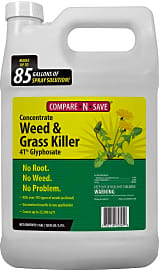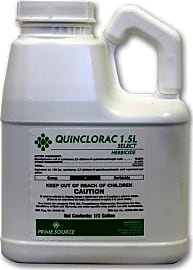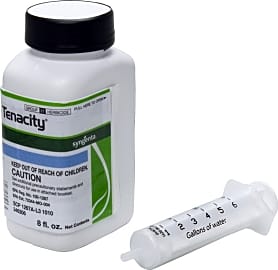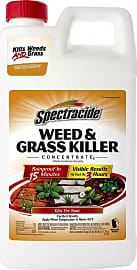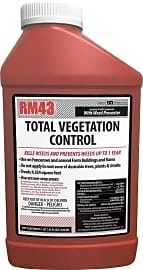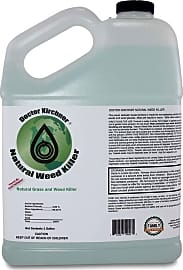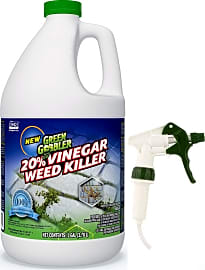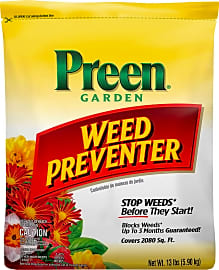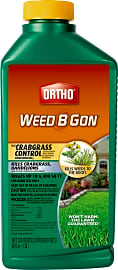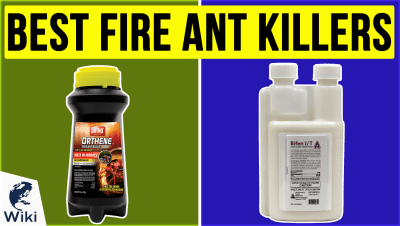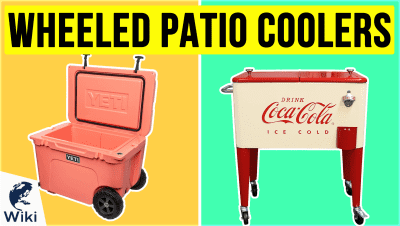The 10 Best Crabgrass Killers

This wiki has been updated 33 times since it was first published in February of 2017. The enemy of every proud lawn owner, crabgrass can spread quickly and overtake your beautiful garden within a very short amount of time. This list includes some of the most effective pre-emergent and post-emergent weedkillers on the market. They can help you win the battle against this stubborn invader, as well as myriad others, and restore your lush landscaping to its former glory. When users buy our independently chosen editorial picks, we may earn commissions to help fund the Wiki.
Editor's Notes
September 18, 2020:
Many of our choices on this list continue to be top selections, but we removed two to ensure a better diversity. First, we said goodbye to Scotts Halts, which is still a fine preventative choice for adequate needs but suffers from spotty efficacy. In its place, we decided to bring on something for gardeners to use on their flower beds and vegetable patches, and so you'll find Preen 264107 Preventer joining the ranks today. This one cannot kill weeds that are already there and is not safe for use on lawns, but it should do a solid job preventing unwanted seeds from germinating. Be aware that you may need to do some mulching before application.
We know that many people are worried about the potential cancer-causing effects of some weedkillers, particularly ones that contain glyphosate, one of the most prominent ingredients in pesticides used in the United States. While government agencies, scientists, and companies have yet to agree on just how harmful it is or isn't, the EPA maintains after consideration that there are no risks of concern to human health when glyphosate is used in accordance with its current label. That being said, some might want to avoid the risk altogether. To help broaden our natural choices with this in mind, we added Green Gobbler Organic, a natural option that eschews chemicals completely in favor of commercial-strength vinegar. Doctor Kirchner Natural also does this.
Many of the choices on this list use a different medley of proprietary ingredients to get the job done, from Syngenta Tenacity Turf Herbicide to Primesource Quinclorac, so read the labels carefully to ensure you're not only getting the right item for your needs but also one that you feel comfortable using. Be sure to follow instructions exactly, and keep pets and children away from areas that have just been treated.
May 02, 2019:
There are a handful of types of crabgrass killers, including nonselective and selective chemical herbicides, preventative treatments, and organic options. We've ensured this list had them all and chose formulas with different ingredients to cater to users in a variety of climates, as well as those who combat an array of weed species every season. You'll find solutions for both home and commercial use.
We removed our previous options from Bayer and Espoma due to questionable effectiveness and added Spectracide Concentrate (a powerful, fast-acting choice for those in a hurry) and Doctor Kirchner Natural for those who'd like to avoid chemicals and use something environmentally friendly.
Primesource Quinclorac, Syngenta Tenacity Turf Herbicide, and BASF Drive XLR8 maintained favorable spots on our list because they are potent, effective, and versatile in their ability to kill other weed types. Ortho Weed-B-Gon Max is good if you don't want the most powerful solution, but simply need something to help curb pests at home. It's also cost-effective.
As a reminder, be sure to follow instructions exactly - not only for the best results but for the safety of your plants and yourself. Many solutions carry on the wind to other plants you don't want to kill, so be sure to apply them on still days, when the temperature is the most compatible (usually warmer). Wear gloves and a mask to prevent the product from touching your bare skin or being breathed in, and resist the urge to overspray.
Special Honors
TruGreen TruMaintenance Lawn Care Plan If you're too busy or otherwise incapable of giving your lawn the attention it needs to keep it healthy and free of pests, a company like TruGreen can help. They have branches across the country and offer several plans that include visits from PhD-certified specialists who evaluate your lawn and design a tailored approach based on its climate, grass type, soil condition, and usage. The TruMaintenance plan includes pre-emergent and targeted weed control, fertilization, and specialist assessments every 4-6 weeks. trugreen.com
Why Is Crabgrass Such A Problem?
But have you ever wondered why it's considered so bad, anyway?
Crabgrass. The name even sounds ugly. If you've ever had it in your lawn, then you know how quickly it can take over, and how hard it is to get rid of. But have you ever wondered why it's considered so bad, anyway?
Crabgrass is what's known as an opportunistic annual grass, and if that phrase conjures up images of sleazy salesmen looking to rip you off, it should. That's basically how crabgrass operates — it sees its opportunity and moves in with a vengeance, spreading like wildfire over any available terrain.
An important thing to know about this plant, however, is that it's not actually harmful. It won't crowd out your existing grass, and it's not considered a weed. So, if you're fine with how it looks, there's no reason to worry about it taking over.
People who are especially proud of their lawns will argue that it's extremely ugly, though, and that's hard to dispute. By the late summer, a yard overrun by crabgrass will look pretty ragged, especially if it's mixed in with more attractive species.
It will die off in the winter, but before it does so it will disperse seeds all over your lawn. In fact, a single crabgrass plant can produce 150,000 seeds each year. If my math is correct, that is a lot of seeds. This is why it's so important to be proactive about controlling crabgrass if you're not a fan of how it looks, because it can easily get out of hand.
Simple Ways To Supplement Your Crabgrass-Killing Efforts
While a dedicated crabgrass killer is a good way to keep the plant at bay, there are simple lawn maintenance techniques you can use to ensure that your herbicide is as effective as possible.
Mixing fertilizer with a pre-emergent herbicide in the spring is a sound strategy for nipping the problem in the bud, so to speak.
An easy way to keep it controlled is by simply letting your lawn grow a little longer than usual. If you allow your grass to grow to about four inches, it can help prevent sunlight from reaching the shorter crabgrass, choking it out. This is also why it's important to fill in any bare spots in your lawn, because an open spot of soil is like sending crabgrass an engraved invitation.
Also, whenever you do mow, leave the clippings on the lawn. This will simultaneously nourish the soil while helping to block light from reaching the crabgrass.
Keeping your lawn fertilized is another great way to prevent the pest from gaining a foothold. When your soil is well-nourished, it's better able to resist unwanted growth. Mixing fertilizer with a pre-emergent herbicide in the spring is a sound strategy for nipping the problem in the bud, so to speak. If you're trying to stay as organic as possible, corn gluten meal can help as well.
Consider changing the way you water as well. Turning the sprinklers on for a few minutes every day provides the crabgrass with more opportunities to germinate, which just means that it will spread faster. Consider watering for a longer period of time, but less often, such as 20 minutes twice a week. You want to give the water a chance to penetrate deep into the soil, giving grasses with stronger root systems a better ability to dig in.
How To Keep It Away Once It's Gone
Getting your lawn crabgrass-free is only half the battle — now you have to keep it that way. Luckily, most of the best strategies for preventing its reemergence are the same ones you used to eliminate it before, so this shouldn't require a drastic lifestyle change. There are a few small changes you'll have to make, however.
There are a few small changes you'll have to make, however.
First off, you have to immediately remove any new crabgrass as soon as you see it. Pull it up by the roots, if possible. It's much easier to prevent it from taking hold then it is to remove it once it's taken over, so don't be lazy if you spy new growth.
After removing it, mulch the soil where it was growing. This helps prevent any seeds from germinating, so you don't have to worry about angry crabgrass children coming back for revenge. Again, this is about depriving the bad grass of light, so you're literally trying to bury it alive here.
Your timing is critical when doing any of this. You need to start your offensive in the early spring, after the temperatures have started clearing 55 degrees. This is when the plant will start germinating, and this is when you must show it who's boss. Apply fertilizer and pre-emergent herbicide to any spots where it's been a problem before, and do your best to bring your bare spots to life.
Ultimately, the most powerful weapon against crabgrass is a healthy lawn. Letting your yard go is a great way to invite weeds and other pests, and crabgrass can quickly become the least of your problems. If your grass is lush and healthy, however, it's significantly harder for invasive species to gain a foothold.


